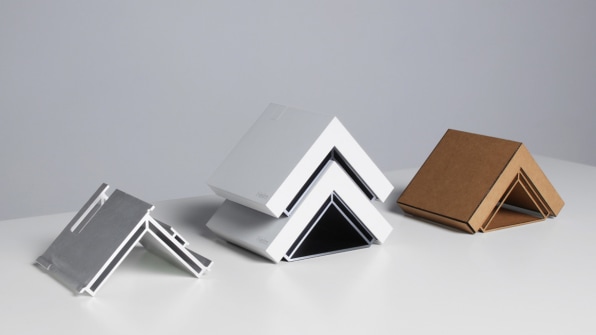How To Create Address Proof
When you think about a backup hard drive, or a home server, what do you think of? A black box and a rat's nest of wires? Blinking, blue LED lights? Edward Snowden? "Release the emails?" All of the above? Probably.
Helm is nothing of the sort. Launched late last year, Helm is a $500 secure home server that's built to keep a household's email, photos, and documents encrypted locally. Its hardware was engineered and designed by San Francisco firm New Deal Design, And what you'll notice immediately is that, instead of playing off normal techie tropes, it actually looks a lot like a small house itself.
"They wanted to build something that felt robust and trustworthy, but there are a lot of generic server boxes out there," says NDD associate design director Erik Askin, of what Helm's founders were looking for. "They wanted something that could stand out and stand for their first product."
With $4 million in funding, Helm is going up against dozens of network storage solutions, and limitless DIY server rigs that security-minded people might set up for themselves. Most of these systems have a bit of a learning curve, though (not to mention uninspired design). Helm hopes to offer an escape from the surveillance economy of services like free online email, and to do so in a way that any Luddite can understand. Helm's promise is that it turns complicated security into a simple gadget.
In a lightning-fast, six-week development process, New Deal Design explored all sorts of designs. As Askin explains, a home server is basically a small computer, with most of the same circuits and storage you'd find in a laptop. Examining the circuit boards they'd need, the engineers knew they could split them apart like a little house of cards, to challenge the traditional rectangle design of most electronics.
The team toyed with what Helm should look like to send a message of domestic security. They considered some surprising forms, including that of a cactus (evoking the prickly but housewarming nature of succulents) and an armadillo (an animal with an almost cuddly armored shell). But they quickly settled on the chevron. Not only did it look like a house; the shape solved a lot of engineering challenges, too.
"From a technical perspective, the thing was going to generate a lot of heat. And for reliability, [the founders] didn't want a fan," says Askin, as moving parts are always more likely to break. "So we had to create a system that could look passively cool, and we integrated it."
That cooling system is Helm's extruded aluminum base–a relatively simple-to-produce triangle of metal that gives the Helm a reassuring heft. It also serves as a giant heat sink to the electronics that sit atop it, which are themselves covered only by the Helm's plastic roof shell.

The chevron shape solved a problem in human factors, too. When electronics are shaped like rectangles, people tend to stack them on top of one another–even though most manufacturers caution against this. "If you look at [home theater] cabinets, each device is adding more heat on the device below. All together, it really hurts the longevity of these devices," says Gadi Amit, founder of NewDeal. It also can cause some products to overheat and just stop working until they cool. "Having a sloping roof prevented any stacking opportunity," he says.
Well, it prevents some stacking. In fact, Helm will soon enable the option for expandable storage–adding more hard drives to store more media–through stacking. Additional Helm hard drives can be neatly piled on top like the multitiered roofs of a pagoda–they're connected through a USB-C port that's hidden where you'd imagine the chimney to be. (There's no heat issue because a pocket of aluminum between each layer helps keep things running cool. So while you shouldn't stack most electronics, Helms are designed for this setup.)
All in all, Helm makes for a superb case study in industrial design. Its shape is born from engineering necessities, but it impacts user behavior through design that prevents stack-based overheating, and its form sends a message that is relevant to our place and time: That in a world where Facebook and Google make incredible amounts of money off our data in mostly opaque ways, maybe we should keep more of it safe under our own roofs.
How To Create Address Proof
Source: https://www.fastcompany.com/90326156/beat-the-surveillance-economy-with-this-clever-gadget
Posted by: drakeimensid.blogspot.com

0 Response to "How To Create Address Proof"
Post a Comment